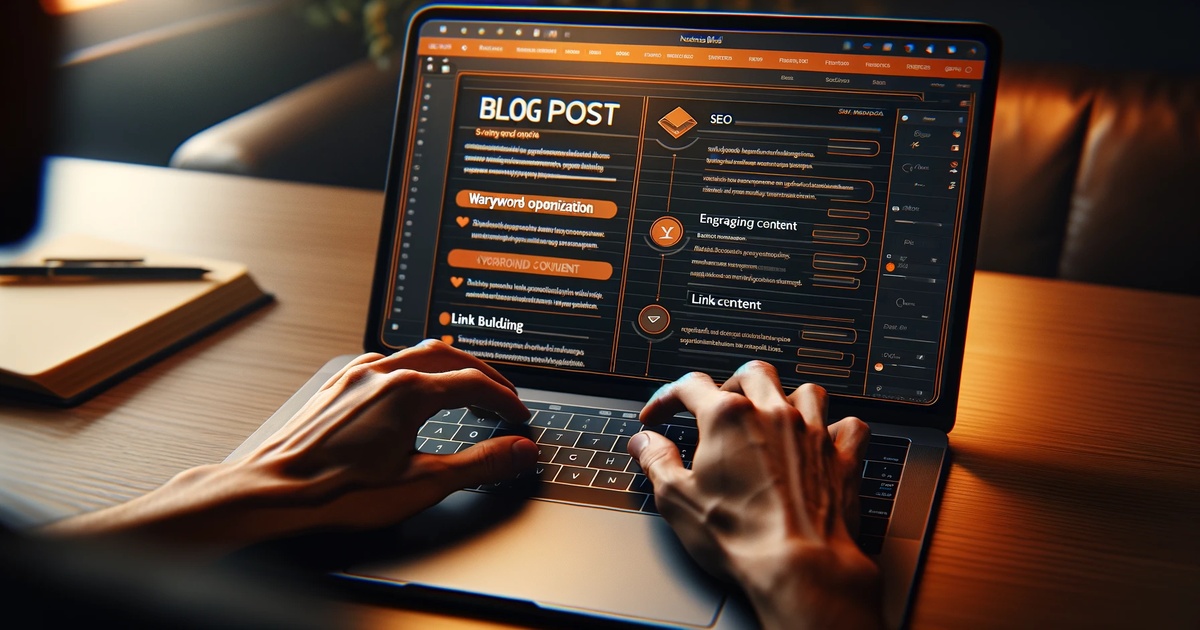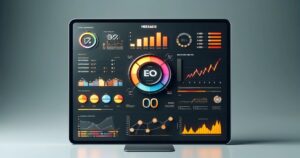Are you looking to amplify the impact of your blog content and propel it to the top of search engine results? Dive into the realm of SEO best practices for blog content to unlock the secrets of optimizing your posts for maximum visibility and engagement. In this comprehensive guide, we’ll explore the strategies, techniques, and tools necessary to elevate your blog’s SEO performance and connect with your target audience effectively.
Understanding Search Intent and Targeted Keywords
One of the fundamental aspects of SEO best practices for blog content is to understand the search intent behind user queries. By conducting thorough keyword research, you can identify the terms and phrases that resonate with your audience and align with their search intent. Implementing long-tail keywords and leveraging semantic search can help ensure that your content is relevant and valuable to users.
On-Page SEO Techniques for Blog Content
Optimizing the on-page elements of your blog content is crucial for enhancing its visibility and relevance to search engines. This includes optimizing title tags, meta descriptions, and URLs with targeted keywords to improve search engine rankings. Structuring your content using headings and subheadings not only aids readability for users but also helps search engines understand the hierarchy and organization of your content.
Content Formatting and Readability Tips
Formatting your blog content in a way that is visually appealing and easy to read is key to keeping users engaged. Utilize bullet lists and subheadings to break up the text and make it more scannable for readers. Additionally, incorporating relevant multimedia elements such as images and videos can enhance the overall user experience and encourage longer dwell times on your website.
Link Building Strategies for Blog SEO
Link building remains a critical component of any successful SEO strategy. Internal linking within your blog content helps establish a logical site structure and guides users to other relevant pages on your website. External linking to authoritative sources not only adds credibility to your content but also improves its overall value. Consider reaching out to reputable websites for guest posting opportunities to acquire high-quality backlinks.
Monitoring and Analyzing Performance
Tracking the performance of your blog content is essential for evaluating the effectiveness of your SEO efforts. Utilize tools like Google Analytics to measure key metrics such as organic traffic, page views, and conversion rates. By analyzing user behavior and engagement data, you can identify areas for improvement and make informed decisions to optimize your blog content for better search engine visibility and user engagement.
For more information on best SEO practices, you can refer to resources provided by Moz.
Tips for Implementing SEO Best Practices in Blog Content
Optimizing your blog content for search engines involves more than just sprinkling keywords throughout your articles. To truly enhance your SEO efforts, follow these tips to ensure your blog content is optimized for success.
Conduct Comprehensive Keyword Research
Before diving into writing your blog posts, take the time to conduct thorough keyword research. Identify relevant keywords and phrases that align with your content and target audience. Utilize tools like SEMrush or Ahrefs to explore keyword search volume, competition level, and potential opportunities for ranking.
Key Points:
- Focus on long-tail keywords that reflect user search intent.
- Incorporate variations of your main keywords to capture a broader audience.
- Keep an eye on trending topics and seasonal keywords for timely content.
Optimize On-Page Elements
From title tags to meta descriptions, optimizing on-page elements is crucial for improving your blog’s visibility in search results. Ensure that each blog post has a unique and keyword-rich title tag, compelling meta description, and user-friendly URL structure. Make it easy for search engines to understand the context of your content.
Key Points:
- Craft concise, descriptive title tags that entice clicks.
- Write meta descriptions that summarize the content and encourage user engagement.
- Include targeted keywords in your URLs for better SEO relevance.
Create High-Quality, Engaging Content
While keywords are essential for SEO, high-quality content is what keeps readers coming back. Focus on creating valuable, informative, and engaging blog posts that cater to your audience’s interests and needs. Use a mix of text, visuals, and multimedia to enhance the overall user experience.
Key Points:
- Write thought-provoking headlines that capture attention.
- Break up content with headings, bullet points, and visuals for better readability.
- Aim to answer common questions or provide solutions to users’ problems.
Build a Strong Internal Linking Structure
Internal linking plays a significant role in SEO by guiding users and search engine crawlers to relevant content on your website. Incorporate internal links within your blog posts to connect related topics and improve navigation. This not only enhances the user experience but also helps search engines discover and index your content.
Key Points:
- Link to relevant internal pages using descriptive anchor text.
- Create content clusters around core topics to build internal linking opportunities.
- Regularly audit and update internal links to ensure they are functional and add value.
By implementing these SEO best practices in your blog content, you can improve your website’s visibility, attract more organic traffic, and establish your brand as a credible source of information in your industry.
| Key SEO Factors for Blog Content | Importance |
|---|---|
| Keyword Research | High |
| On-Page Optimization | High |
| Content Quality | High |
| Internal Linking | Moderate |
| External Linking | Moderate |
| User Engagement | High |
Leveraging Expert SEO Tools
When it comes to optimizing your blog content, utilizing expert SEO tools can significantly streamline the process and enhance your results. These tools offer advanced features and insights that can help you implement SEO best practices more effectively and efficiently.
Benefits of Using SEO Tools:
- Keyword Research: Tools like SEMrush and Moz Keyword Explorer provide in-depth keyword analysis, search volume data, and keyword difficulty metrics to guide your content strategy.
- On-Page Optimization: Platforms such as Yoast SEO and Ahrefs offer on-page optimization suggestions such as content readability, meta tags optimization, and internal linking recommendations.
- Competitor Analysis: Tools like SpyFu and SEMrush enable you to analyze your competitors’ strategies, backlink profiles, and keyword targeting to refine your own approach.
- Performance Tracking: Google Search Console and Google Analytics help track key SEO metrics, monitor website performance, and identify areas for improvement.
How SEO Tools Enhance Blog Content Optimization:
- Efficiency: Streamline keyword research, content optimization, and performance tracking processes.
- Insights: Gain valuable data and insights to make informed decisions regarding your blog content strategy.
- Competitiveness: Stay ahead of the competition by leveraging advanced tools to refine your SEO practices.
- Data-Driven Decisions: Make data-driven decisions based on comprehensive analytics and performance metrics provided by these tools.
Incorporating expert SEO tools into your content optimization strategy can elevate your blog’s visibility, engagement, and overall success in the digital landscape. By leveraging these tools effectively, you can stay ahead of the curve and continuously improve your SEO practices to drive sustainable results.
| SEO Tools | Primary Function |
|---|---|
| SEMrush | Keyword Research, Competitor Analysis |
| Moz | On-Page Optimization, Link Analysis |
| Ahrefs | Backlink Analysis, Content Research |
| Google Search Console | Performance Tracking, Technical SEO |
| Google Analytics | Website Traffic Analysis |
Measuring Success with Key Performance Indicators (KPIs)
Understanding the impact of your SEO best practices on your blog content requires tracking and analyzing key performance indicators (KPIs). By monitoring relevant metrics, you can assess the effectiveness of your strategies and make data-driven decisions to optimize your content for search engines.
Utilizing Essential KPIs for Blog SEO:
- Organic Traffic: Measure the volume of visitors who land on your website through organic search results.
- Keyword Rankings: Track the positions of your targeted keywords in search engine results pages (SERPs).
- Bounce Rate: Monitor the percentage of visitors who navigate away from your site after viewing only one page.
- Click-Through Rate (CTR): Analyze the ratio of users who click on your website’s link compared to the total number of impressions.
- Conversion Rate: Evaluate the percentage of visitors who complete a desired action, such as signing up for a newsletter or making a purchase.
- Backlink Profile: Assess the quality and quantity of backlinks pointing to your blog content.
Why KPIs are Crucial for SEO Success:
- Performance Evaluation: KPIs provide insights into the effectiveness of your SEO efforts and overall content strategy.
- Data-Driven Decisions: Analyzing KPIs empowers you to make informed decisions based on quantifiable data.
- Identifying Trends: Monitoring KPI trends helps you spot patterns, successes, and areas for improvement in your SEO practices.
- ROI Measurement: KPIs allow you to quantify the return on investment (ROI) of your SEO initiatives.
When it comes to optimizing your blog content for search engines, tracking and analyzing KPIs are essential components of refining your strategy and achieving sustainable SEO success. By focusing on key metrics and adjusting your approach accordingly, you can enhance your blog’s visibility, attract more organic traffic.
Embracing Continuous Improvement in SEO Strategies
In the dynamic world of digital marketing, staying abreast of the latest trends and algorithm changes is paramount for optimizing your blog content effectively. By fostering a culture of continuous improvement within your SEO strategies, you can adapt to evolving search engine requirements and enhance the performance of your blog over time.
Key Principles for Continuous SEO Improvement:
- Stay Informed: Regularly stay updated on industry news, algorithm changes, and best practices in SEO.
- A/B Testing: Experiment with different strategies, keywords, and content formats to determine what resonates best with your audience.
- Optimization Iterations: Continuously analyze and optimize your blog content based on performance data and user feedback.
- Adaptability: Be flexible in adjusting your SEO tactics to align with shifting search engine algorithms and user behaviors.
- Competitor Analysis: Keep an eye on your competitors’ SEO strategies and incorporate learnings into your own approach.
Implementing a Process of Evolution in SEO:
- Content Audits: Regularly audit your existing blog content to identify areas for improvement, update outdated information, and optimize for new keywords.
- Algorithm Monitoring: Stay vigilant in monitoring search engine algorithm updates and adjust your SEO strategies accordingly to maintain visibility.
- User Engagement Analysis: Analyze user engagement metrics such as time on page, bounce rates, and social shares to gauge content effectiveness and make necessary improvements.
- Feedback Integration: Incorporate feedback from users, comments, and analytics into your content optimization process to enhance user experience and relevance.
By embracing a mindset of continuous improvement and adaptability in your SEO strategies for blog content, you can cultivate a competitive edge in the digital landscape. Consistent refinement and optimization based on data-driven insights will not only boost your blog’s visibility and performance but also drive long-term success in reaching your target audience effectively.
Frequently Asked Questions about SEO Best Practices for Blog Content
How important are keywords in blog content for SEO optimization?
Keywords play a crucial role in optimizing blog content for search engines. By strategically incorporating relevant keywords throughout your posts, you can signal to search engines the topic and relevance of your content, improving the chances of ranking higher in search results.
Is high-quality content more important than SEO techniques?
While SEO techniques are essential for visibility, high-quality content is equally vital. Engaging, informative, and valuable content not only attracts readers but also encourages sharing and backlinking, which are integral to SEO success.
How can internal linking benefit SEO for blog content?
Internal linking helps establish a logical site structure, guides users to other relevant pages on your website, and distributes link equity throughout your content. It enhances navigation, connectivity, and crawlability for both users and search engine bots.
Are multimedia elements like images and videos important for SEO optimization?
Yes, incorporating multimedia elements such as images, videos, infographics, and charts can enhance the visual appeal of your blog content. They not only improve user experience but also increase the likelihood of social shares and backlinks, contributing to better SEO performance.
What role does user engagement play in SEO for blog content?
User engagement metrics such as bounce rates, time on page, and social shares provide insights into how users interact with your content. Search engines consider user engagement signals when ranking pages, making it essential to prioritize engaging and resonant blog content for SEO success.
Call to Action
Unlock the full potential of your blog content and drive sustainable growth with expert SEO strategies. Contact Nesace Media today to elevate your online presence and connect with your target audience effectively.




